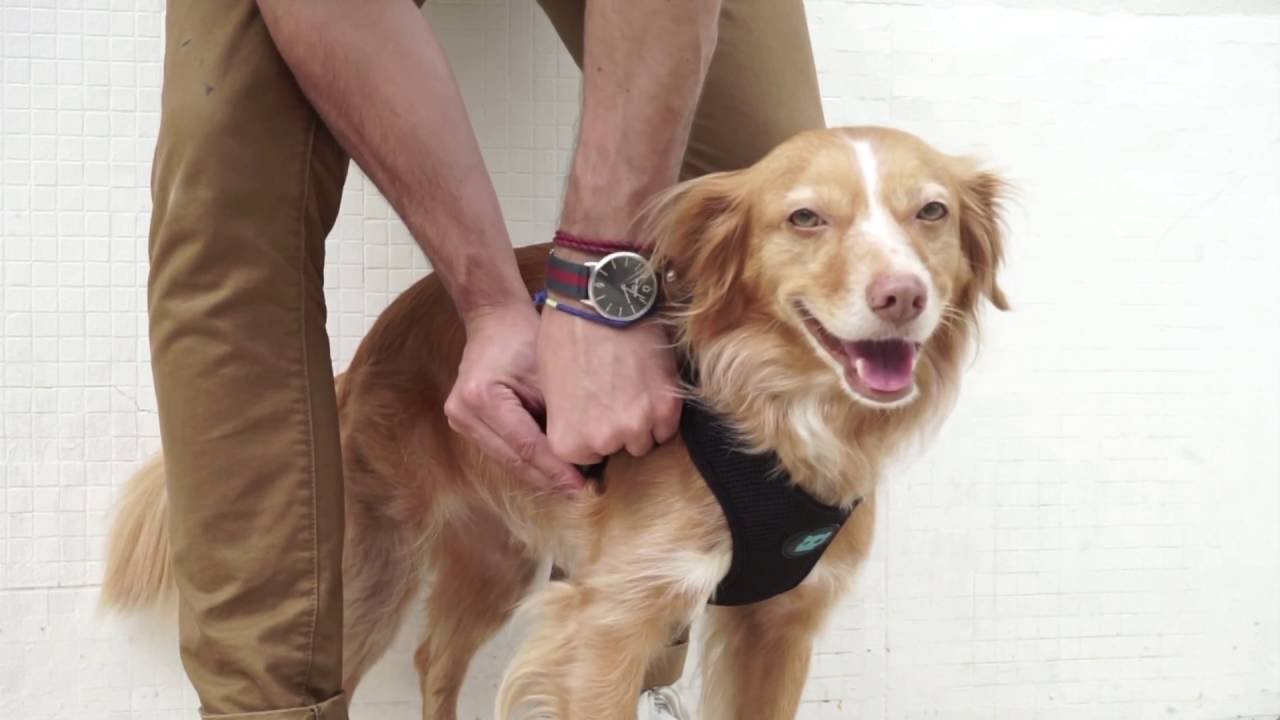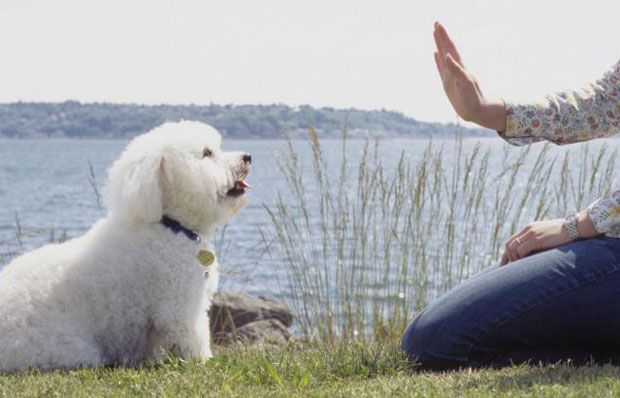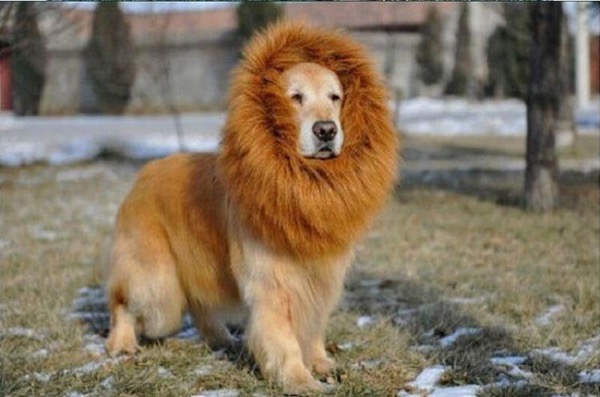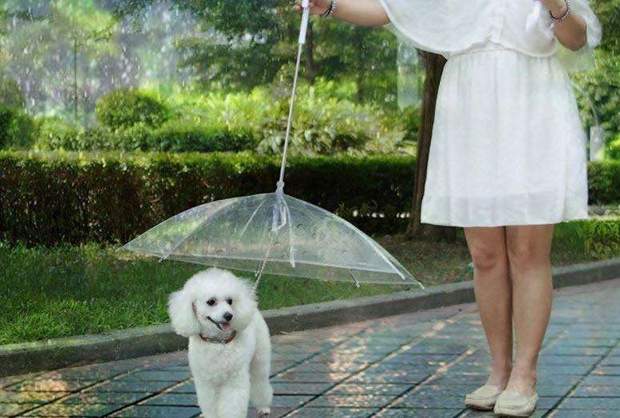Connect with a verified veterinarian in minutes. Licensed vets are available 24/7 to answer your questions. No need to worry about your furry family member.
Is a harness better than a collar for a dog? Is the harness safer than a collar? Can a collar or harness be harmful to your dog? What about a shock collar for small dogs or big dogs? The consensus is out when it comes to which is best. Both collars and harnesses can be helpful to dogs.
Pros and Cons of Collars and Harnesses
Some experts say a dog should wear both a collar and a harness. Why? A harness is more effective when it comes to walking your dog on a leash. It keeps your fur baby securely by your side, while saving your dog from tension on his neck caused by a collar. Dog owners also have more control over their pup when out and about for a dog walk, providing an easy walk experience. Harnesses are great for all dogs, but especially for those who like to pull on the dog leash. If your dog gets his harness caught on something, he’s usually safe—it’s difficult for a dog to suffer either neck injuries or strangulation with a harness.
Collars are best for keeping your dog’s tags and ID on hand. Tags and IDs are easily accessible and offer a secure way for your canine companion show he’s been vaccinated and who to contact in case he’s lost (though he should also be micro chipped). If you clip the leash to your dog’s collar, there’s an increased risk of injury due to the tension and strain put on his neck and shoulders. Plus, a leash-pulling dog is more difficult to control. One problem with collars is that if your dog is running free or has escaped, it’s easy for him to get his collar caught on something. Your dog can suffer a neck injury or even strangulation. Harnesses and collars come in many types and styles; some also have very specific uses.
Types of Collars Available
When it comes to dog collars, it’s fun and easy to show off your individual style. Collars come in a variety of prints and colors, making it fun to “dress” your dog for every occasion, including the holidays! You’ll also find collars with metal buckles, plastic buckles, quick release clasps, etc. There are flat or rolled collars, metal collars, etc. They’re also made from various materials including leather, nylon, metal, or cotton.
There are also different types of collars, most of which have specific uses. Let’s take a look.
1. Standard collars (also called flat collars): are the most traditional dog collars around. These are usually made from nylon or leather, come with a buckle to attach the collar, and usually contain rings for tags & IDs and for the leash. Flat collars should not be too tight or too loose, but should have a snug fit around your dog’s neck. A general rule of thumb is you should be able to get two fingers comfortably under the collar.
2. Martingale collar: this is a type of training collar that’s especially designed for dogs with narrow heads (think Greyhounds, Whippets, etc.). This type of collar offers more control over dogs who have a tendency to slip out of their collar Houdini-style. The Martingale includes a loop of chain that connects to the solid band of the collar, which then goes around the dog’s neck. These collars are usually made of nylon and won’t hurt your pup’s neck like a choke chain collar. If your dog starts to pull, the collar will tighten without injuring your dog’s throat.
3. Leather collar: are some of the most durable collars due to the leather they’re made from. These classic collars come in different lengths, widths and colors to meet your personal style preferences. Leather collars are cost-effective—you won’t have to replace it every few months—they last for years. Some people think these collars are too plain, but they do have a classy, classic look. Look for collars made completely of leather—no bonded leather. Bonded leather doesn’t offer the same durability as real leather.
4. Nylon collar: these are great for dogs to wear all the time. They are durable and come in several lengths and widths, making it easy to find the right-sized collar for your pup. Nylon collars usually come with plastic buckles that securely lock together, making this a great choice for most dogs. Nylon collars come in a wide variety of colors, patterns, etc. If you enjoy showing off your pup’s personal fashion flair, this is the collar for him! You can even find adjustable collars that will “grow” with your fur baby. The collar fits from puppy-size up to adult, so you won’t have to buy a new collar every few months.
These lightweight, inexpensive collars are great for all dogs, and are usually machine washable.
5. Choke collar: this type of collar is usually made of metal links and has two rings at both ends. This type of collar is designed to “choke” a dog who is pulling when on the leash or being disobedient in some other way. Choke collars should only be used on your dog for training sessions. This should not be an everyday collar. While these collars are generally inexpensive, they can cause injury to your dog’s esophagus, cause serious neck strain or even strangulation. These collars are usually not recommended by experts, except for training purposes.
6. Prong collar: this is another type of collar that’s often used for dogs that pull when on the leash. These collars have spikes that dig into the dog’s neck when he’s pulling. Again, this should never be used as an everyday collar, as they can cause severe injuries to your dog if used improperly. They should only be used during training sessions, and then removed afterwards.
7. Shock collars: another not pleasant dog collar—these collars are designed to give your dog a shock when he’s disobedient. Rather than a shock, some collars use a tone or vibration to let the dog know he shouldn’t do something. These collars use remote communication that uses a radio receiver—the pet parent doesn’t have to be present for the collar to work. Shock collars are sometimes used as a form of containment (to keep the pet in his yard, for instance) or for training purposes. Experts consider these collars to be a negative reinforcement method and do not recommend these as a training method.

Review symptoms, medications & behavior to keep your pets healthy with a Vet Online in just minutes.
Ask a Vet Live NowDog Collar Fit
Next, you’ll need to learn how to properly size your dog’s collar. For this, you’ll need a tape measure—use it to measure around your dog’s neck (the circumference). Once you have this measurement, then add on about an inch or two to make sure you have the correct length. You don’t want the collar to fit too tight or too loose. Once you’ve chosen the collar and found the right size, put the collar on your dog’s neck. Fasten it with the buckle and then put two of your fingers in between your dog’s neck and the collar. You should be able to easily get two fingers under the collar; however, the collar should still be snug, but not tight. Your dog shouldn’t be able to slide out of the collar.
Types of Dog Harnesses
Most dogs adjust very well to a harness. In fact, a harness can help your dog feel more comfortable when walking (no straining or choking as with a collar). Dog harnesses go on in different ways—some are step-in, over-the-head, etc. You might want to consider this when choosing the best harness you’re your fur baby. When it comes to dog harnesses, you’ll find different types, too. You’re certain to find the right harness for your dog!
Most dogs adjust very well to a harness. In fact, a harness can help your dog feel more comfortable when walking (no straining or choking as with a collar). Dog harnesses go on in different ways—some are step-in, over-the-head, etc. You might want to consider this when choosing the best harness you’re your fur baby. When it comes to dog harnesses, you’ll find different types, too. You’re certain to find the right harness for your dog!
Harness with front-clasp leash attachment may be the best option for dogs that have been taught to pull. A well-fitted harness may be all that’s needed to correct a dog’s pulling behavior. Your dog will feel secure in a good-fitting harness and will not pull as much as it would with a collar. A harness with a front-clasp leash attachment allows you to use a hand or handle on the end of the leash. If your dog pulls, the clasp will release the leash so that you can use your hand to stop the pulling.
The d-ring, or slip-on, harness is a collar-type harness that attaches to the dog’s collar with a ring. This type of harness is usually only used when the dog is restrained in a crate or kennel. This type of harness may also be used to attach a leash to the dog’s collar. Dog trainers sometimes use this type of harness for dog training. However, for first-time dog owners, the d-ring harness may be too difficult to use and/or may be too confusing. The girth strap of the d-ring harness is sewn to the collar, which may irritate your dog’s neck. When you pick up your dog, the strap may rub your dog’s neck and make him uncomfortable.
Aside from the above-mentioned dog harnesses, there are other types of dog harnesses that may work for your pet. Now, let’s take a look at more of dog harness types listed below.
1. Back-clip harness: the leash ring is located on the top of your dog’s back. These are the most popular types of harness, and they’re great for any dog—from small to large. One note—this type of harness does not discourage pulling during a walk. So, this type of harness is better for calm dogs that walk nicely on the leash. These harnesses are easy to put on, the leash won’t tangle under your pup’s front legs and they come in many colors and patterns—you can let your fashionista out to express your personal style.
2. Front-clip harness: the leash clip is placed in the center of your dog’s chest. This type of harness is often used for training a dog not to pull when walker. You’ll have better control of your pup, including over the direction he can go and have the means to redirect him if needed. This type of harness is better for non-aggressive dogs or dogs with other behavior issues. It’s good to note, too, that this type of harness can sometimes allow the leash to become tangled in your dog’s legs if there’s too much slack in the leash.
3. Mesh dog harness: these harnesses are made of polyester mesh, with the leash ring on the back. These are great for all dogs, dogs with sensitive skin, etc. The harness is usually very soft, making it a comfortable choice.
4. Padded dog harness: can also be a comfortable choice for dogs. The padding is usually found in the chest and on the belly straps, where chafing is often common. The padded harnesses reduces the pressure on these sensitive areas, making them a great choice for dogs with sensitive skin.
How to Fit a Dog Harness
After choosing a harness for your dog, you’ll need to know how to properly measure and size the harness.
1. Measure your dog’s chest circumference, using a cloth tape measure. Start at the bottom of the rib cage and then go up and over his back, then back down to the point where you started. Note this measurement.
2. Neck: wrap the cloth tape measure around the widest part of your dog’s neck, then note the measurement.
3. Weight: some harness makers also use a dog’s weight, in addition to the neck and chest measurements, when sizing a harness. Take your dog’s weight and note that down.
Next, follow the harness maker’s graph to find the right size harness for your fur baby. Sizes generally include x-small, small, medium, large and x-large.
You’ll want to make sure your pup’s harness fits correctly. After your dog’s worn the harness for a time, look to see if he develops chafing around the area covered by the harness. With a proper fit, there should be no chafing. Next, notice if your dog can wriggle out of the harness—if so, then it’s either too big for him, or the straps need to be readjusted for a snugger fit. While you want a snug fit, use the two-finger test to make sure the harness isn’t too tight. You should be able to comfortably get two fingers in between your pup’s harness and your pup—just like you did for the collar.
One more tip for a snug fit—make sure the harness isn’t loose enough to allow your fur baby to get his lower jaw under the harness (in front, on the side)!
We’ve had one of our large dogs do this and then chew his way out of the harness. It didn’t take him long to chew through, either!
Easy to Put on Dog Harness
Most harnesses are generally easy to put on. Let’s take a look at the different types of harnesses and how to put them on, step-by-step.
How to Put on a Dog Harness: Step-in-harness
a. Lay the harness on the ground, unbuckled.
b. Stand your dog’s body over the harness.
c. Put your dog’s front paws in the loops.
d. Snap the strap buckles together on your dog’s back.
How to Put on a Over-the-head harness
a. Slip the neck piece over your dog’s head.
b. Pull the bottom straps down under his tummy and the top strap across his back.
c. If your harness connects on one side, have your pooch step through the loop and then buckle the side straps. If the harness is not connected on one side, then it’s important to remember to fasten the buckles on both sides of the harness. If you leave one undone, your furry friend can easily escape the harness.
How to Put on a Mesh Dog Harness
a. Slide the harness over your dog’s head.
b. Pass the chest strap between your dog’s pass and around to the back loop.
c. Fasten the buckle.
How to Put on a Padded Dog Harness
a. Lay the harness on the ground, unbuckled.
b. Stand your dog over the harness.
c. Put your pup’s front paws in the loops.
d. Snap the strap buckles together on your dog’s back.
We hope this guide has helped you to find the best harness for your dog! We wish you both many happy, comfortable walks!

Connect with a verified veterinarian in minutes. Licensed vets are available 24/7 to answer your questions. No need to worry about your furry family member.

Tom
Tom has always loved to write since he was little - he wanted to be either a writer or a veterinary doctor, but he ended up being a professional writer while most of his works are based on animals. He was born in San Francisco but later moved to Texas to continue his job as a writer. He graduated from the University of San Francisco where he studied biotechnology. He is happily married and a soon to be father!
Review symptoms, medications & behavior to keep your pets healthy with a Vet Online in just minutes.
Ask a Vet Live Now




